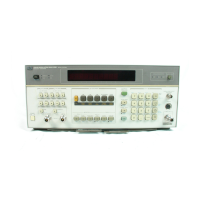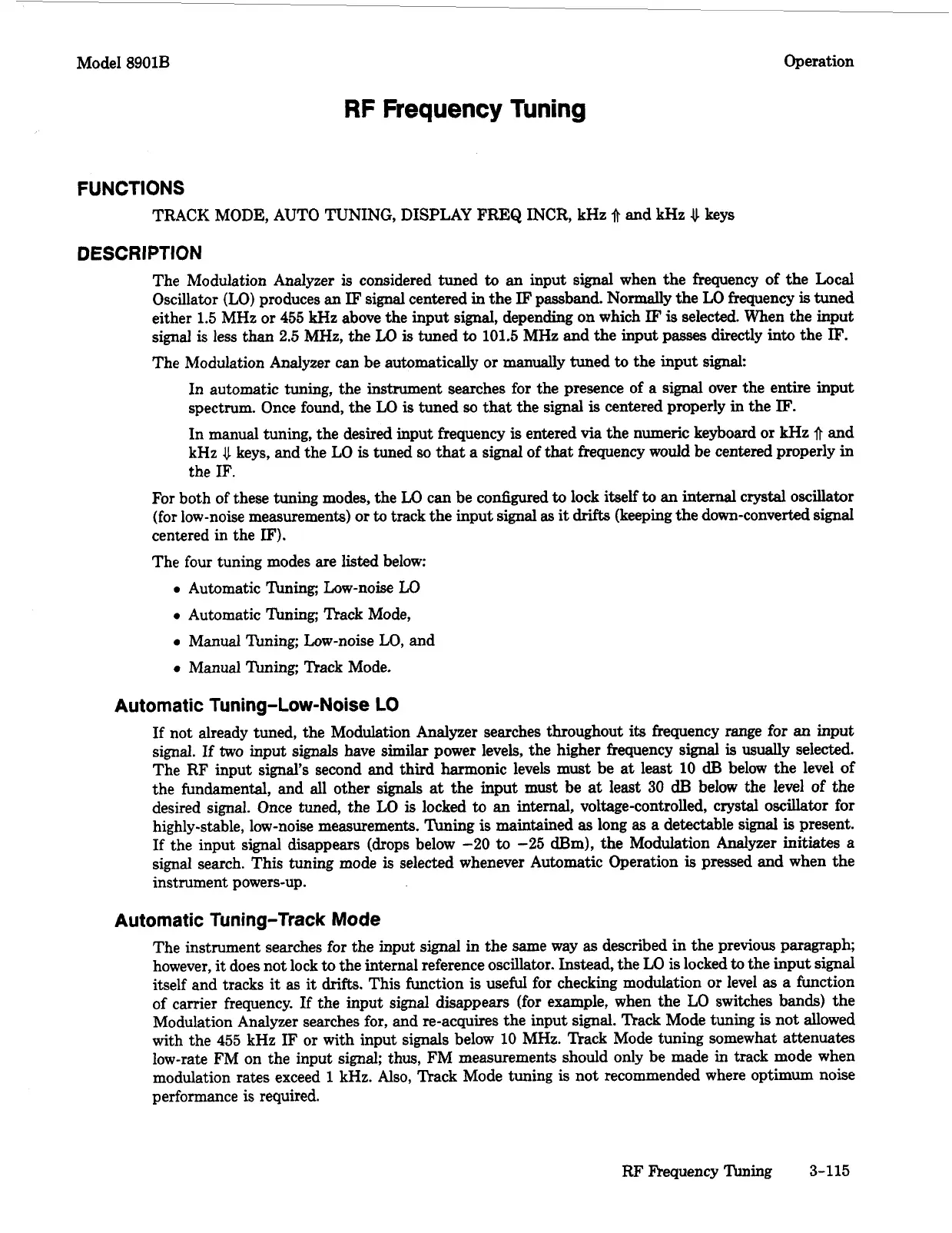Model
8901B
Operation
RF
Frequency Tuning
FUNCTIONS
TRACK MODE, AUTO TUNING, DISPLAY
FREQ
INCR,
kHz
$
and kHz
4
keys
DESCRIPTION
The Modulation Analyzer
is
considered tuned
to
an input signal when the frequency of the Local
Oscillator (LO) produces an
IF
signal centered in the
IF
passband. Normally the
LO
frequency
is
tuned
either
1.5
MHz or
455
kHz
above the input signal, depending on which
IF
is
selected. When the input
signal is less than
2.5
MHz, the
LO
is
tuned
to
101.5
MHz and the input
passes
directly into the
IF'.
The Modulation Analyzer can be automatically or manually tuned
to
the input
signal:
In automatic tuning, the instrument searches for the presence of a signal over the entire input
spectrum. Once found, the
LO
is
tuned
so
that the signal
is
centered properly in the
IF'.
In manual tuning, the desired input frequency
is
entered via the numeric keyboard or
Wz
fi
and
kHz keys, and the LO
is
tuned
so
that
a
signal of
that
frequency would be centered properly
in
the
IF.
For
both of these tuning modes, the
LO
can be configured
to
lock itself
to
an internal crystal oscillator
(for low-noise measurements) or
to
track the input
signal
as
it
drifts
(keeping the down-converted signal
centered in the
IF).
The four tuning modes are listed below:
0
Automatic
hing
Low-noise
LO
0
Automatic Thing; Track Mode,
0
Manual nning; Low-noise
LO,
and
0
Manual hing; Track Mode.
Automatic Tuning-Low-Noise
LO
If
not already tuned, the Modulation Analyzer searches throughout
its
frequency range for an input
signal. If
two
input signals have similar power levels, the higher frequency signal
is
usually selected.
The
RF
input signal's second and third harmonic levels must be
at
least
10
dB
below the level of
the fundamental, and
all
other
signals
at
the input must be
at
least
30
dB
below the level of the
desired signal. Once tuned, the
LO
is
locked
to
an internal, voltage-controlled, crystal oscillator for
highly-stable, low-noise measurements. Thing
is
maintained
as
long
as
a
detectable signal
is
present.
If
the input signal disappears (drops below
-20
to
-25
am), the Modulation Analyzer
initiates
a
signal search. This tuning mode
is
selected whenever Automatic Operation
is
pressed and when the
instrument powers-up.
Automatic Tuning-Track
Mode
The instrument searches for the input
signal
in
the same way
as
described
in
the previous paragraph;
however, it does not lock
to
the internal reference oscillator. Instead, the LO
is
locked
to
the input signal
itself and tracks
it
as
it
drifts.
This function
is
useful for checking modulation
or
level
as
a
function
of
carrier frequency.
If
the input signal disappears (for example, when the
LO
switches
bands)
the
Modulation Analyzer searches for, and re-acquires the input signal. Track Mode tuning
is
not allowed
with the
455
kHz
IF
or
with input signals below
10
MHz. Track Mode tuning somewhat attenuates
low-rate FM on the input signal; thus, FM measurements should only be made
in
track mode when
modulation rates exceed
1
kHz.
Also,
Track Mode tuning
is
not recommended where optimum noise
performance
is
required.
RF
Frequency
%ing
3-115

